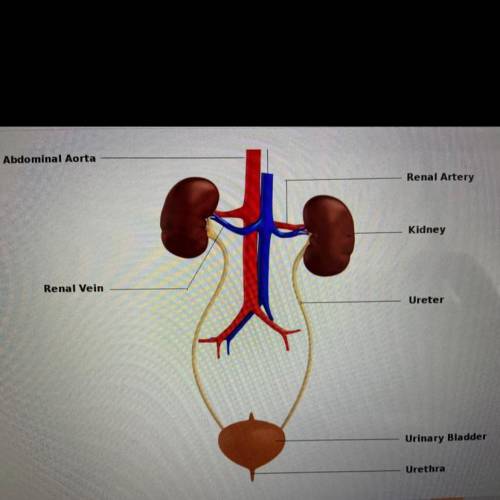Which row matches the structure with the function
a. Urinary bladder - production of urine
...

Biology, 26.10.2021 07:50 gabrielaperezcz
Which row matches the structure with the function
a. Urinary bladder - production of urine
b. Kidney - transport of urine
c. Renal vein - reabsorption of water
d. urethra - passage of urine to the environment


Answers: 1


Another question on Biology

Biology, 22.06.2019 03:30
State officials are considering constructing a road through a forested wilderness area. this action will likely affect the forest ecosystem in various ways. part a: predict how the construction of a road could negatively affect plants and animals in that ecosystem. (3 points) part b: describe one way that the construction of a road could have a positive impact of the forest ecosystem. (1 point)
Answers: 1

Biology, 22.06.2019 06:00
When you run, you begin to breathe heavier and faster. your heart beats more quickly, bringing more oxygen to your cells. which organ systems are working together here?
Answers: 1

Biology, 22.06.2019 16:10
The lake of the ozarks is a human-made lake, so it collects runoff from coal strip-mining, fertilizers, resort wastewaters, and septic drainages. the average lake temperature is between 10∘c and 21∘c. consider the physical requirements for growth and multiplication that would allow fecal coliforms to “blossom” in the lake of the ozarks. which of the following would accurately describe these organisms? check all that apply. psychrophiles facultative halophiles extremophiles mesophiles hyperthermophiles
Answers: 2

Biology, 22.06.2019 16:30
You will create a molecular clock model for an arthropod gene. follow these guidelines to make your model: . your timeline will span from 90 million years ago to the present. the common ancestor in your model is an arthropod that lived 90 million years ago. the gene that you'll track codes for a protein in the species venom . the dna sequence youll track contains 10 nitrogen bases. you can choose the order of the bases and where the mutations occur. this gene mutates at a rate of approximately 0.76 base pairs every 17.1 million years. to build your model,/ calculate the estimated time period it takes for 1 base pair to mutate. the first time period will only show the common ancestor. at the beginning of the second time period, three lineages will diverge from the common ancestor, each with a different mutation in their gene sequences. the first and third descendant species will survive for the rest of the timeline. the second descendant species was extinct 50 million years ago. calculate how long it will take for one full base pair mutation to occur. explain your reasoning by constructing a mathematical equation
Answers: 2
You know the right answer?
Questions

History, 30.09.2019 15:30


English, 30.09.2019 15:30

History, 30.09.2019 15:30



English, 30.09.2019 15:30

Mathematics, 30.09.2019 15:30







Chemistry, 30.09.2019 15:30

History, 30.09.2019 15:30


Chemistry, 30.09.2019 15:30


English, 30.09.2019 15:30



